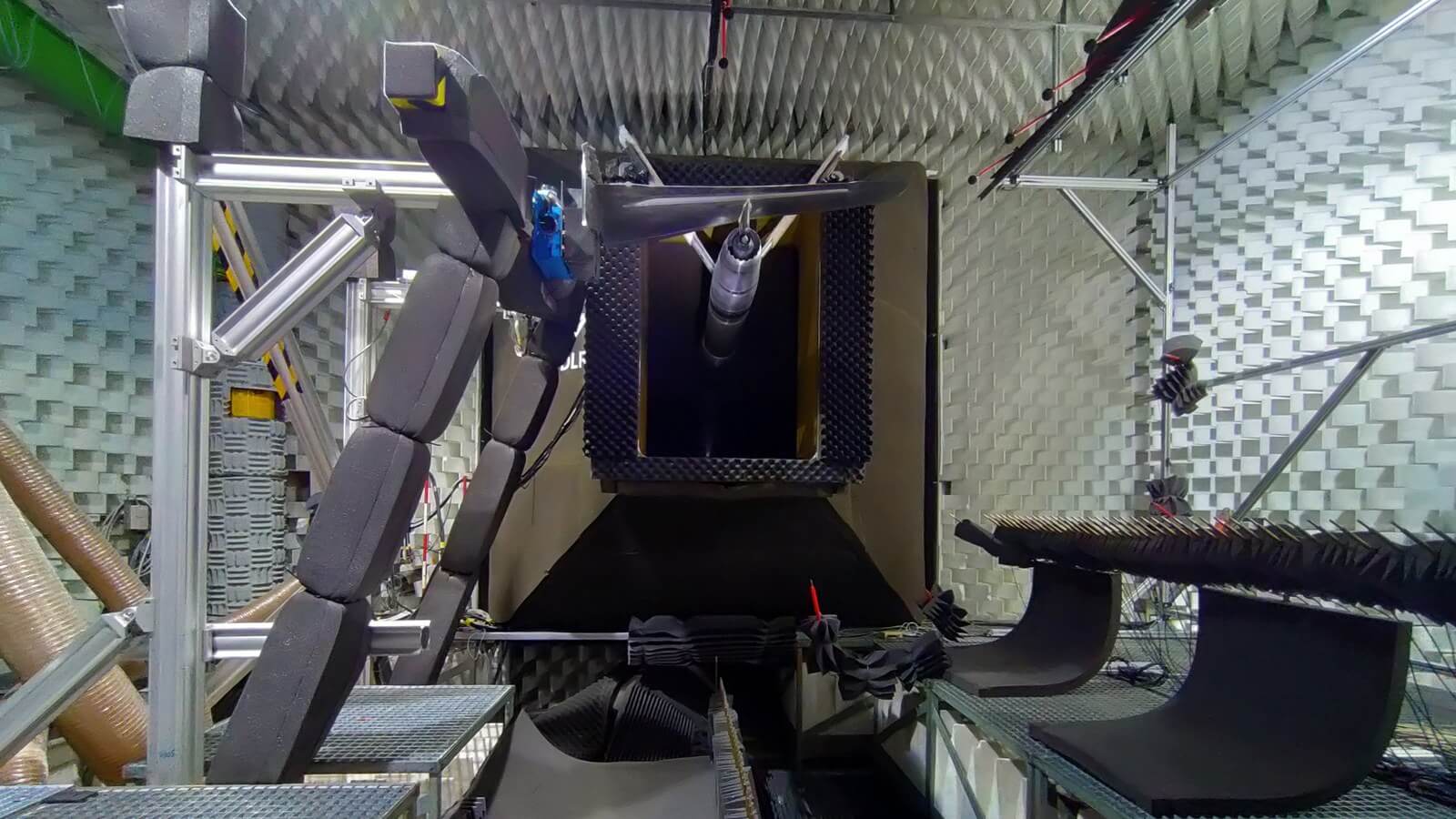As part of the DJINN project, DLR conducted tests on the interaction between engines and aircraft in different configurations. The researchers investigated new configurations and materials to reduce engine noise. The experiments conducted determined that porous metamaterials reduce pressure fluctuations in the turbulent boundary layer.
Djinn, to reduce aircraft noise
After the french lab Onera, which is working on engine integration, as part of the European Decrease Jet-Installation Noise (DJINN) project, DLR researchers have used the Braunschweig aeroacoustic wind tunnel to study aircraft noise. "We focus on aircraft noise, which is mainly generated by the interaction between the engines and the aircraft," explains Christian Jente of DLR's Institute for Aerodynamics and Flow Technology. Larger, more powerful engines on fuselages and wings of the same size aircraft cause more noise due to the interaction of the airflow around them. "With this in mind, the DJINN team investigated new configurations and materials," Jente says.
Testing Two Aircraft Concepts
The researchers conducted wind tunnel experiments to study two different aircraft concepts: an aircraft with engines mounted under the wing, like a conventional large airliner, and a conventional business jet, with engines located at the rear of the aircraft. For the latter, they set up several series of tests: "We made acoustic measurements on three different tailplanes for the business jet," explains Jente. We made acoustic measurements on three different tailplanes for the business jet," Jente explains. "Two conventional tailplanes in cruciform and T-formation, and a U-tail, where the horizontal stabilizer is designed to muffle engine noise." The goal was to evaluate the acoustic advantages and disadvantages of different configurations and measurements. In particular, the researchers examined how the surface of the aircraft's fuselage is stressed by acoustic vibrations - in other words, how "acoustic fatigue" affects the material.
Two microphone arrays
To do this, the researchers at the DLR Institute of Propulsion Technology installed two linear microphone arrays more than three meters long in the AWB. This microphone arrangement allowed them to calculate the precise location and direction-dependent intensity of the sound sources at the engine exhaust, on the fuselage and on the wing. In addition to the linear microphone arrays, far-field microphones placed on the ceiling measured the dispersion of sound in different directions, as this can vary considerably depending on the tail design. In the wind tunnel, the researchers performed another experiment: they chose a porous material for the landing flaps.
Porous materials with interesting characteristics...
In other tests, DLR demonstrated that porous materials have positive acoustic properties. When air flows over porous materials, pressure fluctuations in the turbulent boundary layer are reduced. These therefore do not convert into sound at the trailing edge of the landing flap. "This is the first time that porous landing flaps have been tested in this high-speed configuration," Jente says. Until now, only simplified geometric configurations have been studied. Prototype 3D models have never been tested under realistic wind tunnel conditions. We have shown that complex models can also be fabricated from this type of "meta" material, bringing us closer to industrial applications.
...Facing light and sound waves
For aeroacoustics researchers, this is a breakthrough success. They are convinced that porous or "meta" materials will play an increasingly important role, as these artificially produced materials have physical properties that do not exist in nature, enabling new types of applications. For example, depending on the required capacity, function or research objective, they can influence light and sound waves. The two DLR institutes are currently evaluating 400 gigabytes of microphonic data. The results will help them develop technologies to reduce noise levels in future aircraft. The researchers spent several years preparing the measurements in collaboration with a large number of project partners.
Découvrez cet article sur Air&Cosmos

